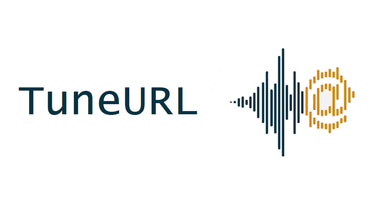Frequently asked questions
What is TuneURL?
TuneURL Inc. was established in 2017, and a patent for the application was secured in October 2019 for a MarTech/AdTech technology transforming consumer engagement using audio triggers to link a call to action. The application enables real-time interaction and measurable audience engagement through touch or verbal response. The initial targeted business vertical is the media industry, advertising, podcasters, and data aggregators. TuneURL has created a simple and safe technology for consumers to interact with broadcast marketing and advertising, in addition to any other data-gathering request from digital and over-the-air (“OTA”) audio.
How does your product/service work?
TuneURL Inc. offers a patented technology platform that augments the way listeners interact with audio content. The solution provides real-time engagement through hyperlinked audio content, allowing users to perform direct actions such as visiting websites, calling phone numbers, or responding to questions directly through the audio interface. This technology not only benefits the end-users but also provides media companies, advertisers, and podcast producers with detailed, actionable insights into listener behaviors and preferences.
What is the TuneURL listener experience?
John listens to the car radio and has the radio station app running on his phone.
John hears the TuneURL triggersound on the radio, indicating an audio hyperlink will be available, i.e., a coupon for a free oilchange.
A notification pops up on his phone
John says “Yes” or tabs the notification
Call-to-action information are stored on his phone, i.e., a coupon
What does TuneURL focus on?
Enable audiences to engage with (audio) content in-the-moment, i.e., radio, podcast, video.
Measure how the audience engages with the content (i.e., heard, interested, shares the content) by making any (audio) content real-time interactive/clickable.
This is a short video explaining TuneURL: https://www.youtube.com/watch?v=nvWBqJL-AOI.
Can the triggersound be inaudible?
The logic/hypothesis is that audible sound works better for a listener's user experience. The benefit is to make listeners aware that an audio hyperlink is available, and if they are interested, they should respond to the notification on their phone. The same is true for why we have ringtones on our phones or notification pings; this is called affordance in UX terms.
Affordance refers to the visual, audible, or interactive properties of an object that suggest how it can be used. In the case of hyperlinks, the blue underline conventionally indicates that the text is clickable and will take the user to another location or page. This visual cue leverages users' prior knowledge and expectations, making it easier for them to navigate and interact with web content. An example of an audio affordance is the "click" sound that is often heard when pressing a button on a touchscreen device or a virtual button in a software interface. This sound provides immediate auditory feedback to the user, indicating that their action has been recognized and processed. This helps reinforce the action's completion and improves the overall user experience by confirming that the interaction was successful.
What makes TuneURL unique?
Unlike conventional digital stealth audio engagement analyst solutions, TuneURL's patented technology works through any audio output device, requiring no special hardware or listener behavior change. This transparent user experience and universal compatibility sets TuneURL apart, making it an ideal partner for any media company aiming to innovate within the rapidly evolving digital landscape and current consumer data protection regulations.
